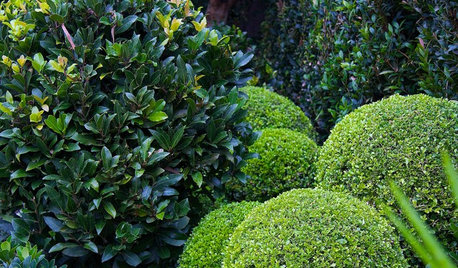Closed eye varieties
bonsaist
14 years ago
Featured Answer
Sort by:Oldest
Comments (11)
wildforager
14 years agolast modified: 9 years agogenecolin
14 years agolast modified: 9 years agoRelated Professionals
Maple Valley Landscape Architects & Landscape Designers · Rancho Cordova Landscape Architects & Landscape Designers · Costa Mesa Landscape Contractors · Eustis Landscape Contractors · Framingham Landscape Contractors · Gresham Landscape Contractors · Oakland Landscape Contractors · Wallingford Landscape Contractors · Four Corners Landscape Contractors · Bloomington Decks, Patios & Outdoor Enclosures · Marlboro Decks, Patios & Outdoor Enclosures · New Albany Decks, Patios & Outdoor Enclosures · Mesa Fence Contractors · Brea Fence Contractors · Park Ridge Fence Contractorsherman2_gw
14 years agolast modified: 9 years agodanab_z9_la
14 years agolast modified: 9 years agoherman2_gw
14 years agolast modified: 9 years agoscott_ga
14 years agolast modified: 9 years agofatnsassytexan
14 years agolast modified: 9 years agogorgi
14 years agolast modified: 9 years agoherman2_gw
14 years agolast modified: 9 years agodanab_z9_la
14 years agolast modified: 9 years ago
Related Stories

LANDSCAPE DESIGNGreen-Only Gardens Draw the Eye and Soothe the Spirit
Use plant and foliage variety to create a monochromatic landscape as visually pleasing as it is calming
Full Story
GARDENING GUIDES6 New Plant Varieties That Beat Out Their Parents
With better resistance and fewer demands, these garden beauties are worth a spot on your wish list
Full Story
STORAGEWatch an Innovative Bookcase Convert Before Your Eyes
Judge the problem-solving ability of these rotating shelves for yourself, but we think it’s an open-and-shut case
Full Story
DECORATING GUIDES'Dracula' Silk Wallpapers Prove a Feast for the Eyes
If you've been drinking in the NBC show's sumptuous sets, this scoop on that gorgeous silk wallpaper will hit the spot
Full Story
FLOWERSRudbeckia Mania: Go Beyond Black-Eyed Susan in the Garden
Branch out from typical nursery fare, with lesser-known Rudbeckia species that have delightfully unexpected features
Full Story
MOST POPULAR102 Eye-Popping Powder Rooms
Flip through our collection of beautiful powder rooms on Houzz and fill your eyes with color and style
Full Story
COMMUNITYGet a Bird's-Eye View of America's Housing Patterns
See the big picture of how suburban developments are changing the country's landscape, with aerial photos and ideas for the future
Full Story
GARDENING FOR BUTTERFLIESButterfly Gardening: Delight the Eyes With Living Sculptures
Surprise and thrill with a garden that attracts magical winged creatures, bringing color, movement and life
Full Story
PRODUCT PICKSGuest Picks: 20 Eye-Catching Wallpapers and Murals
Boost visual interest with the great patterns, photographic images and faux effects of these wall coverings
Full Story
12 Eye-Candy Appliances That Enchant With Color
Move over, stainless. These rainbow-colored confections are bringing a delicious, unexpected note to kitchens and laundry rooms
Full StorySponsored
More Discussions






danab_z9_la